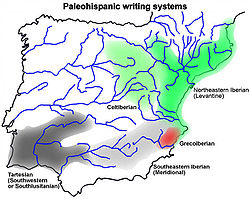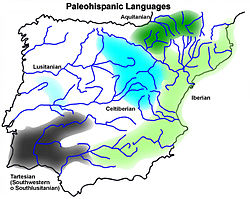









The Iberian scripts are the Paleohispanic scripts that were used to represent the extinct Iberian language. Most of them are typologically unusual in that they are semi-syllabic rather than purely alphabetic.[2] The oldest Iberian inscriptions date to the 4th or possibly the 5th century BCE, and the latest from end of the 1st century BCE or possibly the beginning of the 1st century CE.
- ^ "Paleohispanic keyboard". keyman.com. Retrieved 2024-04-04.
- ^ Ferrer, J., Moncunill, N., Velaza, J., & Anderson, D. (2017). Proposal to encode the Palaeohispanic script.